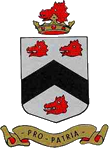



|

| |
After 34 years of shortwave listening, years of
collecting QSL cards from many of the stations I
listened to, watching
the slow and steady decline of shortwave radio transmissions
beamed to North America, and seeing the final
printing of The Passport to World Band Radio book, I decided it
was time to stop delaying my ambition of becoming
licensed amateur radio operator.
In May of
2010, I finally decided to get my amateur radio
license. With the test for the Technician class
license undergoing its usual 4-year change at the
end of June in 2010, and having already purchased
the training guide, I had a real incentive to get
licensed before the end of June. |
|
| | | |
| |
I realized this ambition on June 19th when I joined the
ARRL,
and took and
passed the entry-level Technician class amateur
license exam. Shortly thereafter, I received my new FCC amateur radio
license. With this in hand, I purchased my
first radio, a Yaesu FT-60R HT, and joined the
Lakeland
Amateur Radio Club.
|
|
| |

Yaesu FT-60R Radio
|
|
| |
This gave me the ability to make voice transmissions on
amateur VHF frequencies (50 MHz / 6m) and above.
While this provided me the ability to make contacts
locally, mostly through the local repeaters, I really wanted
to do DX work, making contacts over long distances
and to other countries. For this, I would need at
least a General class license...
In an effort to start making long distance contacts, a month later on July 17th,
I took and passed the mid-level General class amateur
license exam, and earned the privilege of being able to
transmit using voice on all of the lower amateur HF
bands from 1.8 MHz (160m) to 30 MHz (10m). Of course,
now I needed a radio capable of transmitting on those
frequencies. After using an
ICOM IC-R75 radio for shortwave listening for so
many years, I was partial to, and wanted to buy an ICOM
base transceiver. I considered the ICOM IC-718, but I
felt that I would soon outgrow it and need a more
full-featured radio to do real dx work. After some
lengthy deliberation, I finally decided to to pull
the trigger on a Yaesu FT-950 base transceiver.
|
|
| |

Yaesu FT-950 Radio
|
|
| |
Living in a deed-restricted community, I didn't have many viable choices for antennas.
I put up an Alpha-Delta DX-EE 4-band dipole under the
eave of the house. Due to the close proximity to the
ground and the house, this ended up providing only very
short range communications since most of the transmitted
energy was directed nearly straight up into the sky.
Since I would need approval from the home owner's
association to erect any type of real antenna, I went
about the process of seeking permission. Fortunately,
and after adding some reasonably tall magnolia trees in
the back yard to hide an antenna, I was granted
permission to install a vertical antenna. I chose the
Butternut HF9V antenna, and installed it with 36
ground radials at 28 ft. each. This would provide
reasonably good transmit capability on all of the HF bands except for 60m and 160m.
The next step will be to get the final level of
amateur licensing, the Extra class license. Given enough
time to study, the goal will be to get this by the end o
fthe year. This will give me the privilege of
transmitting using all modes on all of the amateur radio
bands.
|
|
| |
|
|
| |
 |
|
| |
|
|
|
Current Time
Lakeland, FL
UTC/GMT
|






